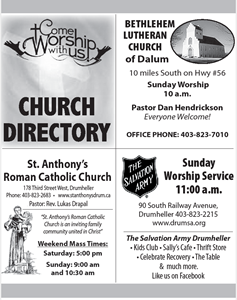
The Royal Tyrrell Museum is known for its world class collection of specimens and now, the museum can also boast some of those specimens are also record-breaking.
Guinness contacted the Royal Tyrrell Museum for the Guinness World Records 2022, which has a very targeted look at specific museums, and several specimens were suggested for world records; five of these suggested specimens were recognized for holding record-breaking titles, from largest marine reptile to the most complete tyrannosaurid skeleton discovered.
“Although the five (record-breaking) specimens are in collection at the museum, only three (Borealopelta markmitchelli, Shonisaurus sikanniensis, and Gorgosaurus libratus) are currently on display,” curator of Dinosaur Systematics and Evolution Dr. Caleb Brown tells the Mail.
Perhaps one of the most recognizable specimens to receive a Guinness World Record is the Borealopelta markmitchelli. It was previously recognized as “one of the most scientifically significant specimens,” and now holds the world record for Best-preserved Armoured Dinosaur.
The specimen was discovered in March 2011 at the Suncor Millennium mine in Fort McMurray by shovel operator Shawn Funk. Upon realizing what he had discovered was fossilized material, Funk and his supervisor contacted the Royal Tyrrell Museum to report their findings.
It took over five and a half years, and some 7,000 hours for lab technician Mark Mitchell to free the fossil from the surrounding rock, exposing an exceptionally well preserved, three-dimensional specimen.
Following a special by National Geographic, Dr. Brown says the museum received numerous booking calls from around the world asking about the specimen.
“It’s so well preserved you don’t have to imagine what dinosaurs look like,” Dr. Brown says, noting most specimens are usually skeletal.
The museum also received certificates for Longest Neck Ever (Based on Number of Vertebrae) for Albertonectes venderveldei, which has an impressive 76 individual neck vertebrae; Gorgosaurus libratus received the record for the Most Complete Tyrannosaur Skeleton--this specimen is also highly recognizable due to its ‘death pose’ and has also helped uncover new information about how tyrannosaurids grew and how their predation changed with age and size; Ornithomimus received recognition as the Most Complete Ornithomimid; and Largest Marine Reptile Skeleton was given to Shonisaurus sikanniensis, which is on display in the Triassic Giant exhibit--the specimen’s mid-section was washed away prior to discovery and researchers were able to estimate the full length of the creature would have been some 21 metres long based on the size of fossil material they were able to collect, such as the skull.
Although Borealopelta is the most recently discovered of the five record-breaking specimens, Dr. Brown says the museum is collecting new specimens every year and several specimens have been discovered by members of the public, and he encourages the public to keep their eyes open when out walking in river valleys or digging in the bedrock.
“Ordinary members of the public, not just palaeontologists, can make a significant contribution,” Dr. Brown says.







